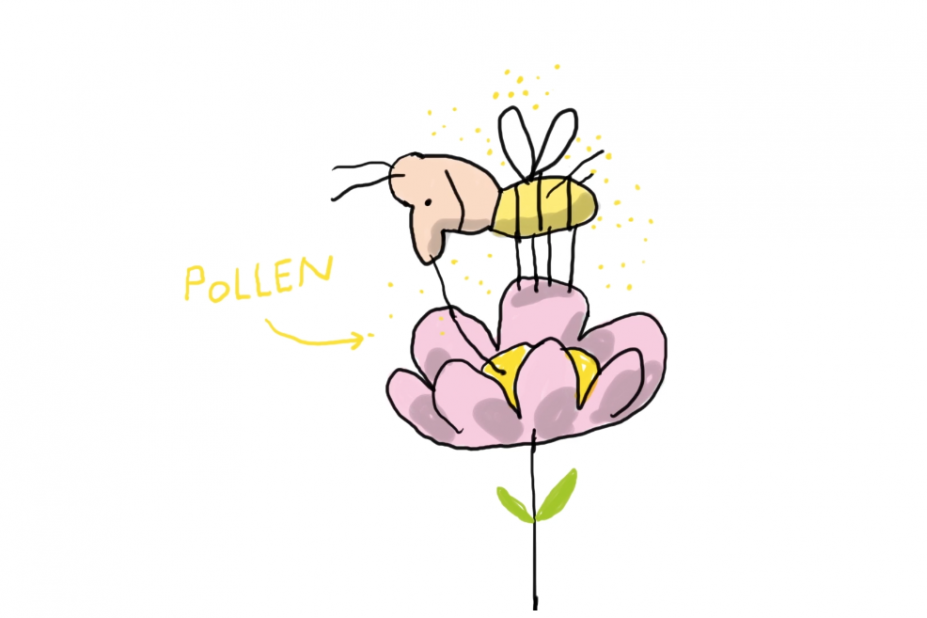Without bees, there would be no pears, no carrots, no cherries or tomatoes.
Because 7 out of 10 flowering plants reproduce thanks to bees!
But how can an insect help a plant to reproduce?
To get food, bees go from flower to flower gathering nectar, a sugary liquid that will be changed into honey.
As they gather the nectar from the flower, a fine powder called pollen gets stuck on the hairs of the bees’ body.
Bees carry this precious cargo to another flower of the same species. This is called pollination.
Transported by the bees, the pollen, containing the male cells of the flower, meets up with the female cells of another flower.
These are the right conditions for a fruit, carrying seeds, to develop.
One bee alone can visit 250 flowers in just one hour!
Unfortunately, the situation is serious. In many parts of the world, bees are dying.
They are victims of diseases, the diminishing number of flowers, but especially of the pollution caused by the chemical products used in agriculture.
The pesticides that protect crops from pests are very harmful for bees.
Little by little, to try and save our friends the bees and the production of good fruit, the use of certain toxic products has been banned.





 Retour
Retour